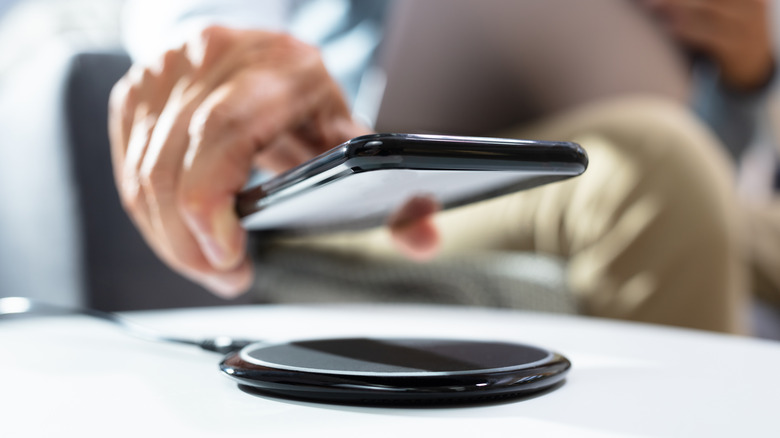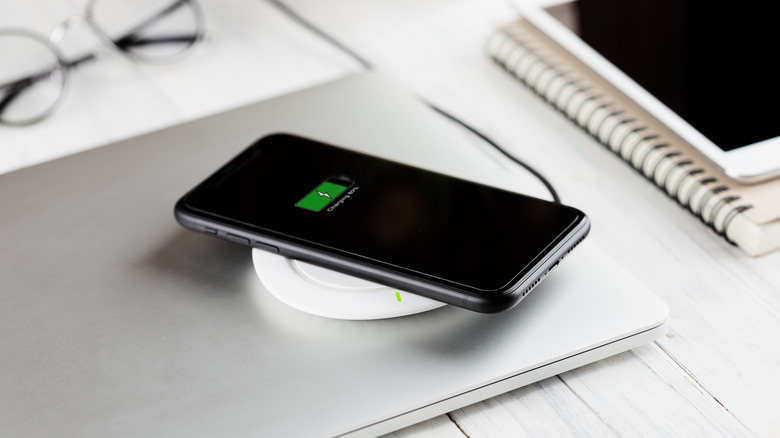Here's When We Expect iPhone-Style MagSafe Tech Will Be Available On Android Phones
If you are among the millions of people who use a wireless charger to top up the battery on electronic gadgets, chances are these devices are using the Qi (pronounced chee) standard to achieve this feat. Today, wireless charging is a commonly used technology supported by a wide variety of devices, primarily smartphones and wearables. Interestingly, the Qi wireless charging standard is a pretty archaic piece of technology by smartphone standards, tracing its origins back to the mid-2000s. It was under development for several years before the Wireless Power Consortium (WPC) introduced it sometime in 2010. It would be two more years before mainstream smartphone brands began incorporating wireless charging on their devices.
The first smartphones to support Qi included the Nokia Lumia 920 and the Samsung Galaxy S3 — both introduced in 2012. The charging speeds on the initial release versions of Qi topped out at 5 watts. Subsequent revisions to the standard have seen the charging rates improve to 15W (in 2015) and 30W (in 2017). These revisions, however, did not address many inherent flaws that plagued the Qi standard.
The most glaring shortcoming of the Qi standard is that devices placed on the charging pad must align properly with the charging coil for optimal charging. Surprisingly, this problem continues to be the bane of most modern-day wireless chargers. As revealed at CES 2023, the WPC has finally gotten around to fixing this major flaw, and it seems to have taken a cue out of Apple's playbook to achieve the feat.
Say hello to the Qi2 wireless charging
Nearly 13 years after it was first introduced, the Qi wireless charging standard is set to receive a successor. The upcoming standard is called Qi2 (pronounced chee 2) and is based on Apple's MagSafe wireless charging technology introduced in 2020 with the iPhone 12 series. The WPC was able to essentially borrow Apple's technology on account of Apple being part of the consortium.
For those unaware, Apple's MagSafe technology uses twin magnets within the wireless charging pad to automatically align the devices for optimal charging. The precise placement of the devices ensures faster charging speeds and less heat generation. This also has a positive impact on the overall lifespan of the battery. The Qi2's newly developed Magnetic Power Profile could spawn a new generation of wireless charging accessories for Android smartphones and wearables — similar to the plethora of MagSafe-based accessories available for the iPhone.
The arrival of the standard would also mean that there would be a single global standard for all mobile devices and wearables soon. The WPC also asserts (via BusinessWire) that the increased adoption of the Qi2 standard and its improved efficiency and interoperability will also mean faster, safer wireless charging speeds in the future. The first of the Qi2-compatible devices and chargers are expected to be released around the 2023 holiday season.

